The Cavity Vaccine: How Nanoparticles Might Eliminate Tooth Decay
Health Desk - Martian Smiles Lab
New Delhi, UPDATED July 11, 2025 02:00 AM
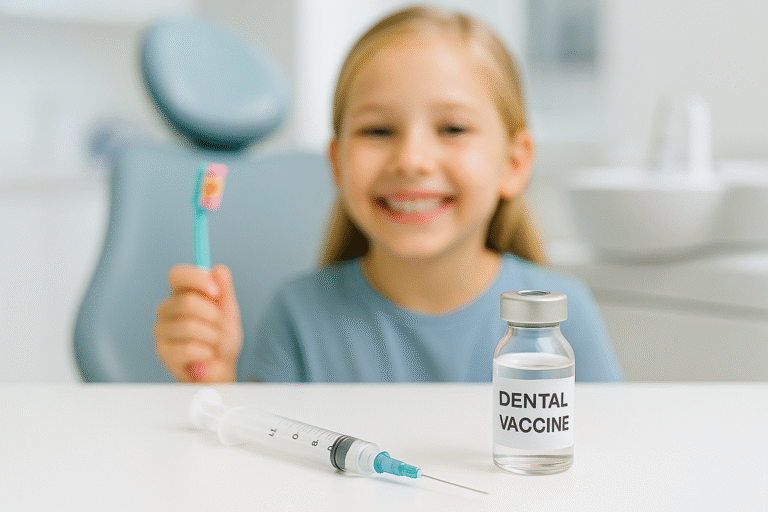
Imagine a future where your child gets one vaccine and never has to worry about cavities again. No more drill sounds, no more fillings, no more dental anxiety. This isn’t science fiction — it’s the direction a team of researchers in China is exploring with a groundbreaking new anticaries vaccine.
In a recent animal study published in Microbiology Spectrum, scientists tested a next-generation dental vaccine that could prevent tooth decay by teaching the body’s immune system to fight off the bacteria that cause it. Their secret weapon? A tiny, smart delivery system made of nanoparticles.
The Real Cause of Tooth Decay
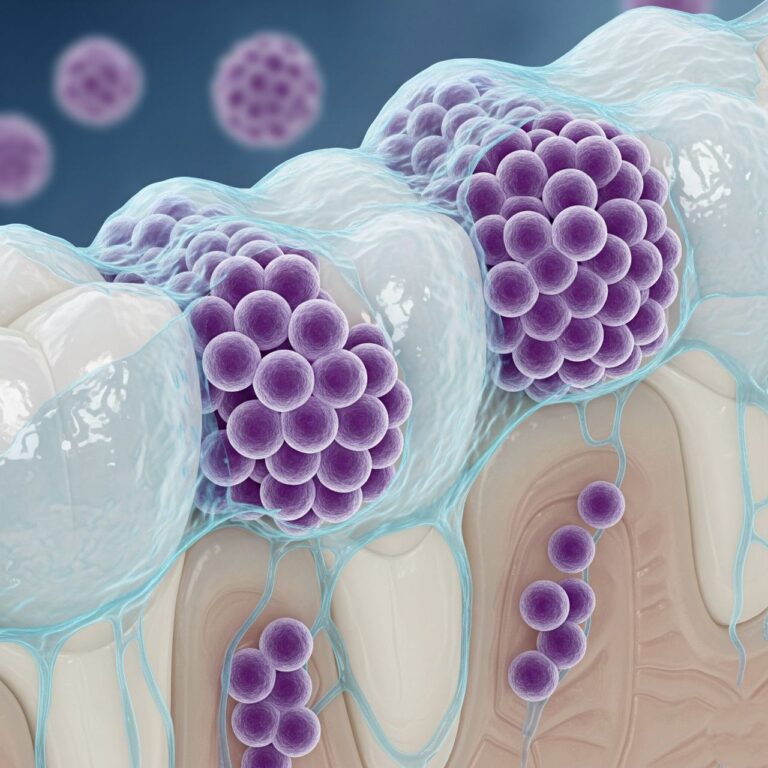
We often blame sugar for cavities — and we’re not entirely wrong. But it’s actually the bacteria Streptococcus mutans (or S. mutans) that does most of the damage. This microbe feeds on leftover sugars in your mouth and produces acid as a byproduct. That acid slowly erodes tooth enamel, creating the tiny holes we call cavities, But tooth decay isn’t caused by bacteria alone — diet and environmental triggers of oral disease also play a major role.”
Despite decades of toothbrushes, toothpaste, and fluoride treatments, dental decay remains the most common chronic disease in children worldwide. Clearly, we need stronger tools — and that’s where vaccines come in.
What Makes This Vaccine Different
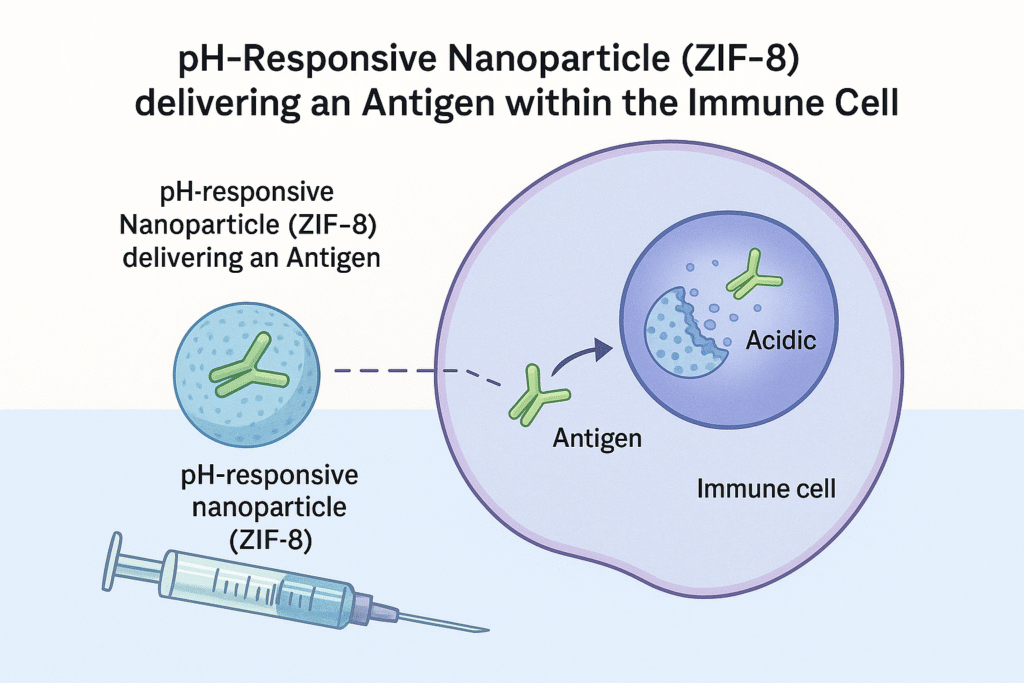
This isn’t the first time scientists have tried to create a vaccine against S. mutans. The target is a protein called PAc, which helps the bacteria stick to teeth. But earlier attempts struggled to generate strong and lasting immunity.
The game-changer in this study is the use of ZIF‑8 nanoparticles — tiny, biodegradable carriers that protect the vaccine until it reaches the right place inside the body. Once inside immune cells, the slightly acidic environment triggers these nanoparticles to release the PAc protein, prompting the body to recognize it as a threat and build up defenses.
Think of it as wrapping the vaccine in a time-release capsule that dissolves only where it needs to — no waste, no confusion for the immune system.
How Well Does It Work?
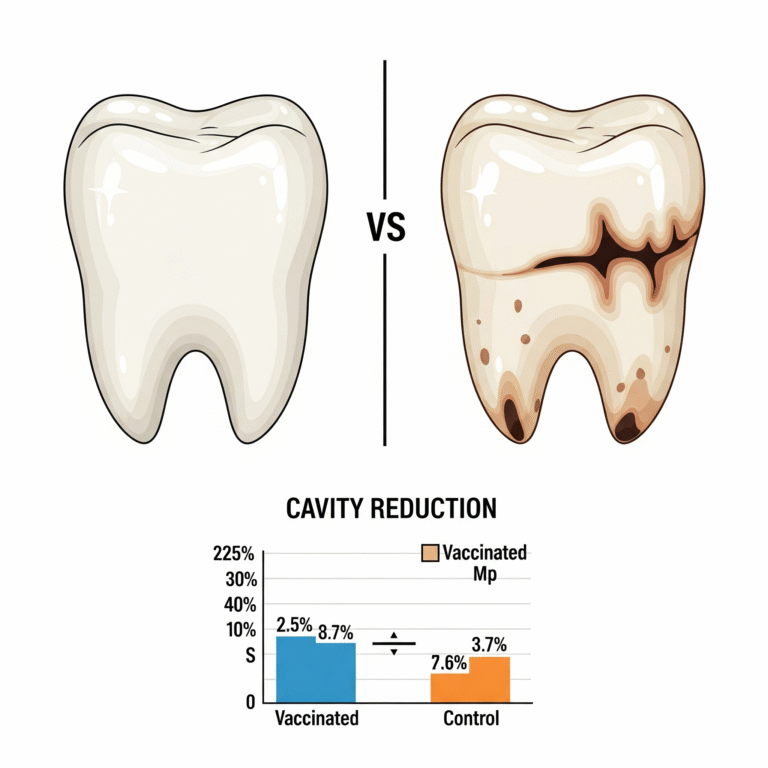
The research team tested their vaccine in mice and rats. The results were impressive.
Animals that received the nanoparticle-loaded vaccine developed high levels of protective antibodies — both in their saliva and bloodstream. These antibodies helped neutralize S. mutans and reduced the bacteria’s ability to colonize the mouth.
Even more promising? When the vaccinated rats were later exposed to sugar and bacteria, they developed significantly fewer and milder cavities than the unvaccinated group. Some had no enamel or dentin damage at all. And just as importantly, the vaccine appeared to be safe — with no signs of toxicity or harmful side effects.
What This Could Mean for Kids, Parents, and Dentists
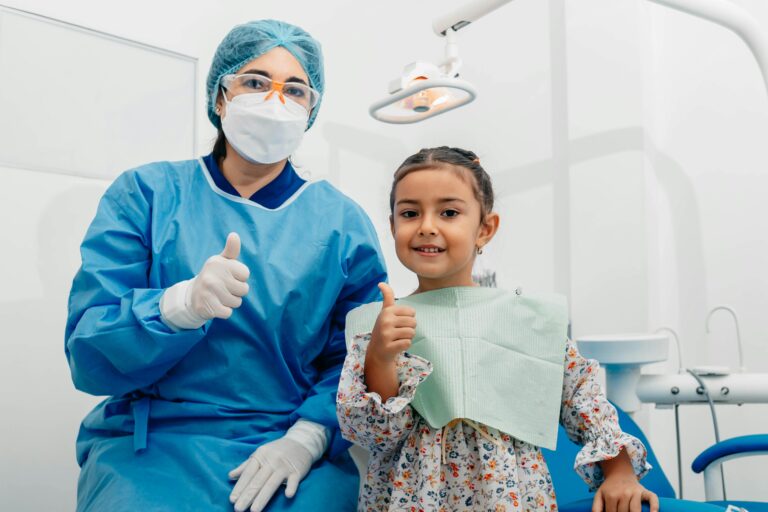
If this vaccine eventually proves effective in humans, it could change the way we think about dental care forever.
Parents might one day bring their child in for a cavity-prevention shot, just like a measles or flu vaccine. Dentists could focus more on monitoring and education rather than drilling and restoring. And for children — especially those who fear the dental chair — it could mean fewer tears, fewer appointments, and healthier smiles for life.
This would also be a major step forward for underserved communities where regular brushing, fluoride, or access to dental clinics isn’t always possible. A single vaccine dose could offer long-term protection where toothbrushes and clean water aren’t guaranteed.
Still Early — But Very Promising
Of course, this isn’t available at your local clinic just yet. The research is still in early stages and has only been tested in animals. Human trials are the next big step — and those take time, money, and careful evaluation of long-term effects.
But make no mistake: this is one of the most exciting developments in preventive dentistry in decades. By combining biotechnology and nanoscience, researchers may have found a way to stop cavities before they even begin.
Official Address
- Bonn, Germany
- Victoria, Mahe Island, Seychelles
- New Delhi, India.
- info@drbibhakarranjan.com
- +49 15560 936114
Copyright 2025 Dr Bibhakar Ranjan – All Rights Reserved
